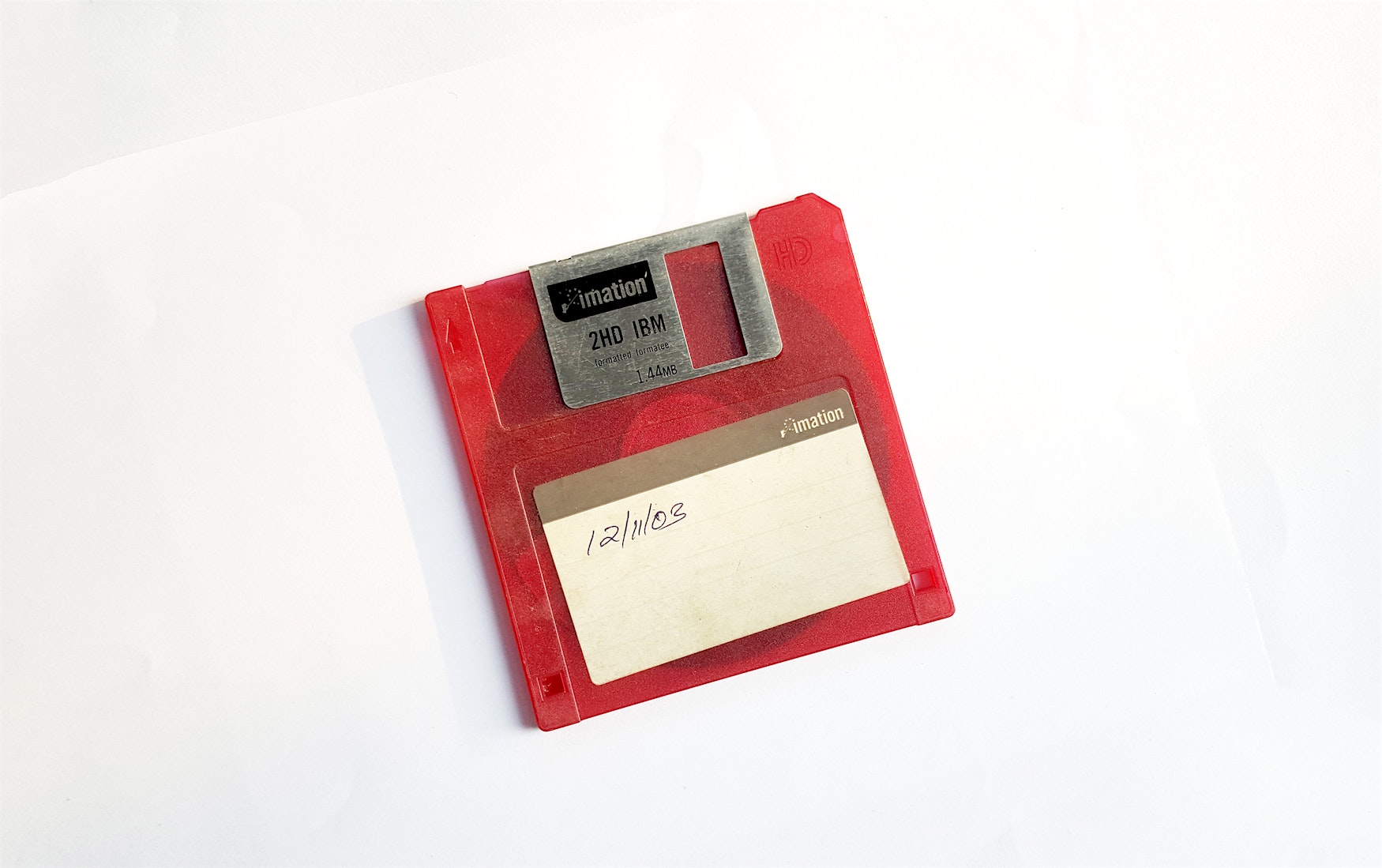Having a good memory is advantageous, even as people stay home amidst the pandemic. Our memories help us maintain an intellectual connection to the world, and keep us from mentally deteriorating.
Today, we’re launching a new series of articles on memory enhancement, starting with a short overview of how our memory works and the basic training you can undergo to improve it.

jesse orrico — Unsplash
?Human memory is best described as a means of information storage and recall. Accordingly, it can be categorised by the kind of information it stores, and the length of time this recall is possible. We normally split it into three basic categories: sensory memory, short-term memory, and long-term memory.
Sensory memory is activated as an instant, automatic response to sensory information — whatever we see, hear, or touch. It is integral to the process of recognising and responding to our surroundings. Its main downside is duration — the contents of one’s sensory memory are renewed every 200-500 milliseconds.
Short-term memory lasts up to 40 seconds. It allows us to reproduce freshly received information without consulting the original source. It is reliable but limited in capacity: for a long time, it was thought that it can only store 7±2 things at once. That idea is traced to a 1956 paper by a cognitive psychologist George Armitage Miller, which detailed the experiments he conducted during his time at Bell Labs.
Miller claimed that people’s short-term memory could store anywhere from 5 to 9 units of information — be it sequences of letters, word, or images. To “get over” this limitation, people used mnemonic devices to put complex information into groups. However, modern researchers think that the number proposed by Miller is too high — and the actual capacity of our short-term memory is closer to 4±1 units of information.

While there’s still a lot we don’t know about the human brain, it would be wrong to assume that these memory types exist in isolation from one another. Richard Atkinson and Richard Shiffrin were among the first to propose a theory of how they might be connected. Sensory memory is engaged first.
Some of the information it receives is ‘buffered’ before being handed out to short-term memory. If this process is repeated enough times, the information moves from short-term memory to proper storage. Recall reverses the process by moving information from long-term memory to short-term memory.
Fergus Craik and Robert Lockhart developed a competing theory. They contest that our ability to remember information is contingent on how we process it. The more complex our processing is, the more time it takes, the higher the possibility of us remembering something.
In-depth studies of this subject led to the emergence of more complex theories and models. Long-term memory was further divided into two kinds: explicit (conscious) and implicit (unconscious or hidden).
Explicit memory is what we usually refer to when talking about our ability to remember things. According to a theory proposed by Canadian scientist Endel Tunvig in 1972, it can be either episodic (dealing with life events) or semantic (dealing with facts and abstract notions).

Implicit memories are usually divided into procedural ones and those influenced by priming. Priming happens when two consequent stimuli create a set of expectations. It can be used to explain the phenomenon of misheard lyrics. Our expectations have as much bearing on our perception of reality as reality itself — so, when we are exposed to a humorously ‘misheard’ rendition of a song, we start hearing it on our own. Similarly, when someone deciphers a piece of unintelligible handwriting, it becomes easier to read without any assistance.
The science of human memory isn’t limited to aforementioned theories. Multiple competing proposals were put forward by these scientists’ contemporaries and followers alike. There are many ways to categorize memory — some people put autobiographic memory in a class of its own (nested somewhere between episodic and semantic memory), and a third large category of memory — “working memory” — has, too, been proposed.
There’s no reason not to train your memory. A recent Chinese study even shows that, aside from the obvious benefit of helping you remember things, memory training can help you deal with emotional issues. Here are some of the ways to improve your memory:
‘Chunking’ will help you expand your short-term memory. As we mentioned earlier, our short-term memory doesn’t have a lot of ‘slots’. But those can be nested — with multiple items ‘chunked’ together in each. This is why we divide phone numbers into blocks of digits: by doing so, the unreadable 9899802801 becomes the logical 98-99-802-801.
There’s no reason to focus too much on your short-term memory, though. Not everything we encounter deserves long-term archival. The restaurant menus, the shopping lists, the strangers’ outfits can all be safely forgotten when they’re no longer of use.

Repetition matters. Might sound obvious, but the frequency with which you revisit a certain subject influences the amount of details you remember about it. The more often you think of something, the better your memory of it is. However, there are a couple of points worth mentioning. First, the breaks between memorization sessions should be neither too long nor too short. Try repeating the same routine at different time intervals to see what works best for you. Second, when trying to recall something complex, you shouldn’t interrupt the process by looking at the answer. It might be tempting — but the more you can naturally extract from your memory, the better your subsequent attempts at memorizing it will be.
Recreate the right environment. Recreating the environment in which you’ll need to use a piece of information — be it a university classroom or your office — will actually help you remember it once you’re there. This is applicable to both semantic memory and muscle memory.
For example, a 1994 study found that baseball players who were thrown random pitches during batting practice performed better compared to those who worked on a single pitch at a time. Actual games of baseball don’t feature any indication of the pitch about to be thrown — unless you’re the 2017 Astros — so re-creating this environment helps develop the correct kind of muscle memory. What’s more, this technique can also be used to combat stage fright and deal with other kinds of stress.
Say it in your own words. This approach ensures a greater depth of information processing. The very process of re-wording something helps us internalize it. In essence, it takes semantic information into the personal realm, taking advantage of our episodic memory for somewhat unrelated purposes.
The methods we outlined above aren’t easy, but they’re very effective. In the next article we’ll take a look at other approaches to memory training, as well as various lifehacks and shortcuts.
Further reading:
Today, we’re launching a new series of articles on memory enhancement, starting with a short overview of how our memory works and the basic training you can undergo to improve it.

jesse orrico — Unsplash
Memory 101: sensory, short-term, long-term
?Human memory is best described as a means of information storage and recall. Accordingly, it can be categorised by the kind of information it stores, and the length of time this recall is possible. We normally split it into three basic categories: sensory memory, short-term memory, and long-term memory.
Sensory memory is activated as an instant, automatic response to sensory information — whatever we see, hear, or touch. It is integral to the process of recognising and responding to our surroundings. Its main downside is duration — the contents of one’s sensory memory are renewed every 200-500 milliseconds.
Short-term memory lasts up to 40 seconds. It allows us to reproduce freshly received information without consulting the original source. It is reliable but limited in capacity: for a long time, it was thought that it can only store 7±2 things at once. That idea is traced to a 1956 paper by a cognitive psychologist George Armitage Miller, which detailed the experiments he conducted during his time at Bell Labs.
Miller claimed that people’s short-term memory could store anywhere from 5 to 9 units of information — be it sequences of letters, word, or images. To “get over” this limitation, people used mnemonic devices to put complex information into groups. However, modern researchers think that the number proposed by Miller is too high — and the actual capacity of our short-term memory is closer to 4±1 units of information.

Long-term memory is fundamentally different. It can store information indefinitely, and is much larger in capacity. This can be attributed to the kinds of neural connections it leverages. Short-term memory creates temporary connections in the frontal lobe and the posterior parietal cortex.
Long-term memory creates rigid neural connections across the entire brain.
While there’s still a lot we don’t know about the human brain, it would be wrong to assume that these memory types exist in isolation from one another. Richard Atkinson and Richard Shiffrin were among the first to propose a theory of how they might be connected. Sensory memory is engaged first.
Some of the information it receives is ‘buffered’ before being handed out to short-term memory. If this process is repeated enough times, the information moves from short-term memory to proper storage. Recall reverses the process by moving information from long-term memory to short-term memory.
Fergus Craik and Robert Lockhart developed a competing theory. They contest that our ability to remember information is contingent on how we process it. The more complex our processing is, the more time it takes, the higher the possibility of us remembering something.
Types of long-term memory
In-depth studies of this subject led to the emergence of more complex theories and models. Long-term memory was further divided into two kinds: explicit (conscious) and implicit (unconscious or hidden).
Explicit memory is what we usually refer to when talking about our ability to remember things. According to a theory proposed by Canadian scientist Endel Tunvig in 1972, it can be either episodic (dealing with life events) or semantic (dealing with facts and abstract notions).

Implicit memories are usually divided into procedural ones and those influenced by priming. Priming happens when two consequent stimuli create a set of expectations. It can be used to explain the phenomenon of misheard lyrics. Our expectations have as much bearing on our perception of reality as reality itself — so, when we are exposed to a humorously ‘misheard’ rendition of a song, we start hearing it on our own. Similarly, when someone deciphers a piece of unintelligible handwriting, it becomes easier to read without any assistance.
Muscle memory, on the other hand, is a type of procedural memory. Our bodies “just know” how to ride a bike, write, and play sports — once we get used to performing an action, we don’t need to expand any effort to remember how it’s done.
The science of human memory isn’t limited to aforementioned theories. Multiple competing proposals were put forward by these scientists’ contemporaries and followers alike. There are many ways to categorize memory — some people put autobiographic memory in a class of its own (nested somewhere between episodic and semantic memory), and a third large category of memory — “working memory” — has, too, been proposed.
Dumb but reliable: memory improvement for dummies
There’s no reason not to train your memory. A recent Chinese study even shows that, aside from the obvious benefit of helping you remember things, memory training can help you deal with emotional issues. Here are some of the ways to improve your memory:
‘Chunking’ will help you expand your short-term memory. As we mentioned earlier, our short-term memory doesn’t have a lot of ‘slots’. But those can be nested — with multiple items ‘chunked’ together in each. This is why we divide phone numbers into blocks of digits: by doing so, the unreadable 9899802801 becomes the logical 98-99-802-801.
There’s no reason to focus too much on your short-term memory, though. Not everything we encounter deserves long-term archival. The restaurant menus, the shopping lists, the strangers’ outfits can all be safely forgotten when they’re no longer of use.

Repetition matters. Might sound obvious, but the frequency with which you revisit a certain subject influences the amount of details you remember about it. The more often you think of something, the better your memory of it is. However, there are a couple of points worth mentioning. First, the breaks between memorization sessions should be neither too long nor too short. Try repeating the same routine at different time intervals to see what works best for you. Second, when trying to recall something complex, you shouldn’t interrupt the process by looking at the answer. It might be tempting — but the more you can naturally extract from your memory, the better your subsequent attempts at memorizing it will be.
Recreate the right environment. Recreating the environment in which you’ll need to use a piece of information — be it a university classroom or your office — will actually help you remember it once you’re there. This is applicable to both semantic memory and muscle memory.
For example, a 1994 study found that baseball players who were thrown random pitches during batting practice performed better compared to those who worked on a single pitch at a time. Actual games of baseball don’t feature any indication of the pitch about to be thrown — unless you’re the 2017 Astros — so re-creating this environment helps develop the correct kind of muscle memory. What’s more, this technique can also be used to combat stage fright and deal with other kinds of stress.
Say it in your own words. This approach ensures a greater depth of information processing. The very process of re-wording something helps us internalize it. In essence, it takes semantic information into the personal realm, taking advantage of our episodic memory for somewhat unrelated purposes.
The methods we outlined above aren’t easy, but they’re very effective. In the next article we’ll take a look at other approaches to memory training, as well as various lifehacks and shortcuts.
Further reading:
- Juggling work and study at ITMO University
- ITMO startups: machine vision edition
- Esoteric programming languages: a systematic approach
- GoROBO: an educational initiative from the ITMO University startup accelerator

